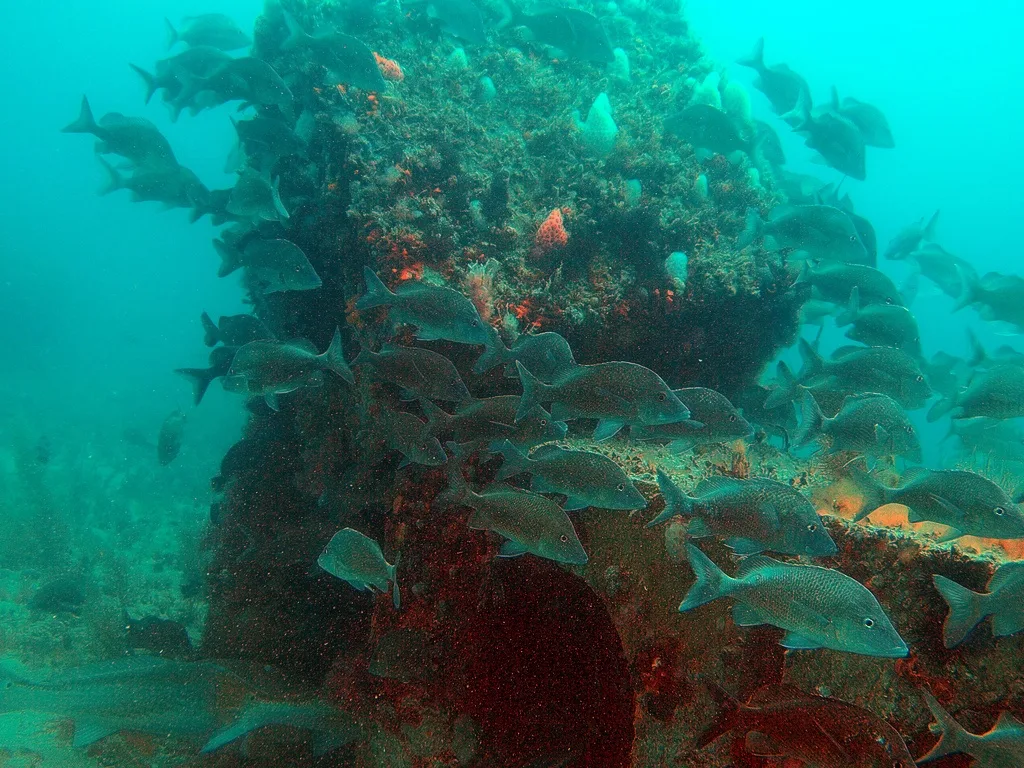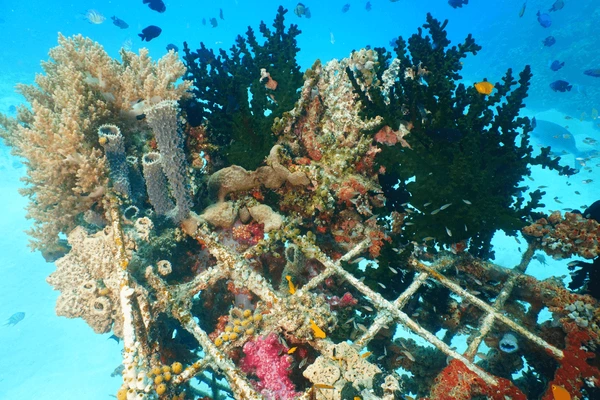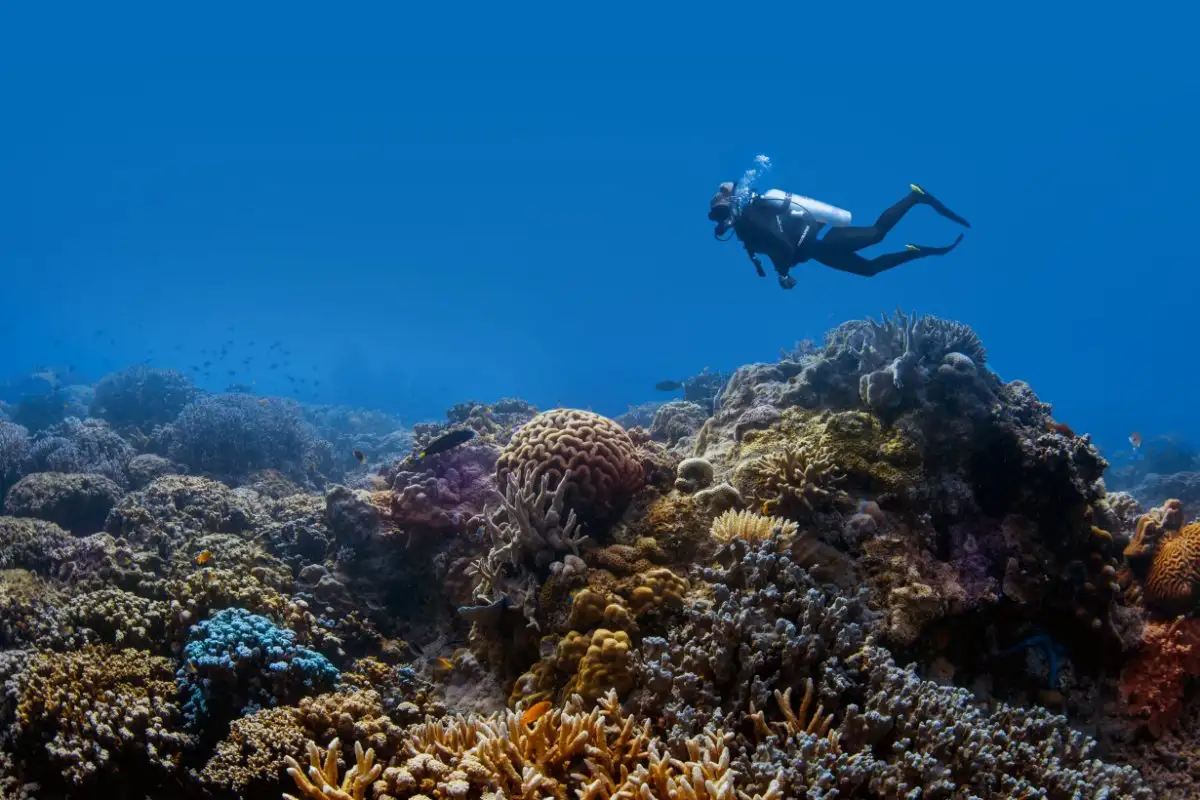When we think of underwater reefs, vibrant coral gardens often come to mind. However, some reefs find their foundation in rather unusual objects. For over a century, a diverse array of items has been strategically placed on the seabed off the U.S. coast to serve as habitats for marine life and recreational spots for fishing and diving enthusiasts. These artificial reefs range from decommissioned ships to concrete pipes, offering a unique glimpse into the underwater world.
Lets Understand Artificial Reefs
Artificial reefs play a crucial role in marine ecosystems, providing shelter and breeding grounds for various species of fish. Through extensive research, scientists have discovered that these man-made structures can attract large predatory fish like groupers and jacks, acting as biodiversity hotspots in the ocean. Additionally, artificial reefs serve as vital waypoints for reef fish expanding their habitats and offer resting spots for sharks.
Mapping the Extent of Artificial Reefs
To shed light on the scale of artificial reef ecosystems, a team of scientists embarked on a groundbreaking study to quantify their extent along the U.S. coastline. Their findings revealed that artificial reefs cover approximately 7 square miles of the seafloor, equivalent to 3,600 football fields. These reefs, crafted from a diverse range of materials, have been strategically placed to optimize fish habitat and promote marine biodiversity.

Modern Reefing Practices
Unlike indiscriminate dumping, modern reefing practices adhere to strict regulations to minimize environmental impact. Decommissioned ships undergo thorough cleaning to mitigate pollution risks before being sunk to create reefs. Materials such as rubber and plastic, which pose environmental hazards, are now prohibited from use in reef construction. Additionally, reefed objects are strategically placed in designated zones on the seafloor to maximize their ecological benefits.
Diverse Reef Structures
Artificial reefs boast a diverse array of structures, ranging from decommissioned vessels to railway boxcars and even voting machines. Limestone rocks, concrete modules, and metal rigs occupy significant portions of the seafloor, providing essential habitat for marine life. However, while artificial reefs offer numerous benefits, they also pose ecological challenges, such as the spread of invasive species and habitat disturbance.

The Future of Artificial Reefs
As climate change continues to reshape ocean ecosystems, understanding the impact of artificial reefs becomes increasingly vital. By monitoring how fish and other species interact with these structures, scientists can glean valuable insights into their ecological role. Moreover, lessons learned from artificial reefs can inform the design and placement of future marine infrastructure, such as offshore wind farms, ensuring a harmonious coexistence between humans and marine life.
Artificial reefs represent a fascinating intersection of human innovation and ecological conservation. As we delve deeper into their impact on marine ecosystems, we uncover new opportunities to enhance biodiversity and promote sustainable ocean management practices. By studying these underwater marvels, we pave the way for a more resilient and interconnected ocean ecosystem.
CLICK HERE to read more about this
CLICK HERE TO VISIT OUR HOME PAGE
You have asked the following as well
–What is artificial coral reef?
Artificial reefs are intentionally placed benthic structures built of natural or man-made materials, which are designed to protect, enhance, or restore components of marine ecosystems.
-How do you make artificial coral reefs?
Build an Artificial Reef
- Step 1: Choose Location. …
- Step 2: Test Reef Design Outside of Water. …
- Step 3: Move Materials to Site. …
- Step 4: Build Your Base. …
- Step 5: Add Levels 2, 3, and 4. …
- Step 6: Add the 5th Level and the Center Support. …
- Step 7: Monitor, Maintain and Protect. …
- Step 8: Progress Pictures After 1 Year.
-Can we artificially create coral?
The researchers first grow corals in artificial ocean-based nurseries. These comprise tree-like structures made from fishing lines attached with plastic branches. The structures hang from a buoy, and individual corals are planted on each branch.
–What is the famous artificial reef?
Oriskany (CVA-34) nicknamed the Mighty O, is the first naval warship and largest artificial reef ever to be intentionally sunk in U.S. coastal waters. Built shortly after World War II, the Oriskany is 911 foot in length and could hold up to 80 planes.

-Are artificial reefs good or bad?
Artificial reefs can help restore and create new habitats for marine species to thrive. Biodiversity enhancement: Artificial reefs attract a wide range of marine organisms, including fish, crustaceans, mollusks, and plants. By increasing biodiversity, these structures can contribute to healthier marine ecosystems.
-Who invented artificial coral?
Alcala may be best known for his research related to the rehabilitation of coral reefs. In 1977, he created the first artificial reef, and this reef became a model for many other fisheries development programs around the world.
-What are the benefits of artificial reefs?
The artificial reefs created new (compensating) ecological values and increased the biomass in an area in and around the reef. Moreover, the flora and fauna on reefs can have a strong purifying effect to the water.
-What is the biggest artificial reef?
Ex-USS Oriskany
The world’s largest artificial reef was created by sinking of the 44,000 ton aircraft carrier USS Oriskany off the coast of Pensacola, Florida, in 2006.

